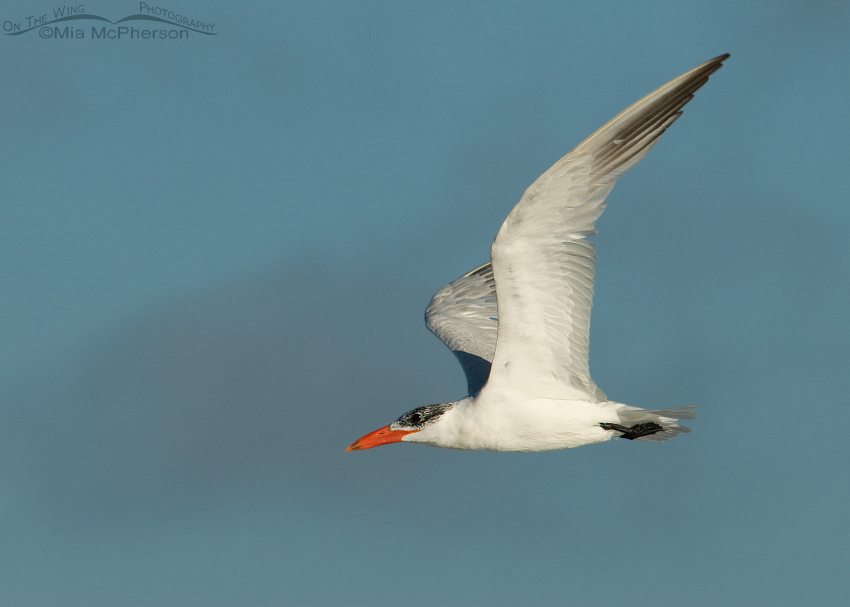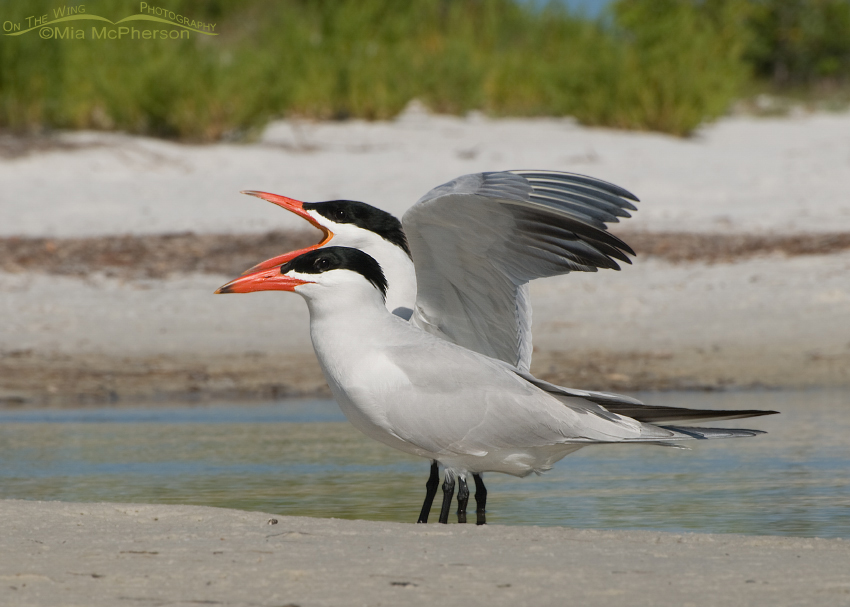Soon Caspian Terns will be back in Utah flying over rivers, ponds, lakes and other freshwater impoundments searching for prey.
 Nonbreeding Caspian Tern in flight – Nikon D200, handheld, f7.1, 1/1600, ISO 320, Nikkor 80-400mm VR with 1.4x TC at 310mm, natural light, not baited
Nonbreeding Caspian Tern in flight – Nikon D200, handheld, f7.1, 1/1600, ISO 320, Nikkor 80-400mm VR with 1.4x TC at 310mm, natural light, not baited
Caspian Terns are the largest terns in North America and are about the size of a Ring-billed Gull. I have been fortunate to see and photograph them in both Utah and Florida. They make a funny “kowk” call and usually I hear them before I see them when I am out photographing here in Utah. Caspian Terns breed here in northern Utah but the largest breeding colony of them is in Oregon.
The Caspian Tern with the speckled crown in the photo above is in nonbreeding plumage, I photographed it in flight over the Gulf of Mexico in Florida. There was a storm coming off of the Gulf that made for an interesting sky.
 Pair of Caspian Terns in breeding plumage – Nikon D200, handheld, f18, 1/160, ISO 160, Nikkor 70-300mm VR with 1.4x TC at 300mm, natural light, not baited
Pair of Caspian Terns in breeding plumage – Nikon D200, handheld, f18, 1/160, ISO 160, Nikkor 70-300mm VR with 1.4x TC at 300mm, natural light, not baited
This pair of Caspian Terns with all black crowns were in breeding plumage when I photographed them at Fort De Soto County Park’s north beach. I have always chuckled when I view this image because it almost looks like a two-headed, four-legged Caspian Tern due to the close proximity of the terns. To get both birds in focus I set my aperture at f18 and that worked well.
I can’t wait to see my first of the year Caspian Terns!
Life is good.
Mia
Click here to see my Caspian Tern photos plus facts and information about this species.


Beautiful! I love terns!
Love the two-headed centi-legged bird. Stunning shot.
I don’t often get to see terns so when one comes my way…..I’m watching:) Very nice shots!
Both are excellent images of a bird I first saw when I moved here (Brigham City) a few years ago at a nearby pond in the park. Fewer in number than the gulls here, they are graceful flyers, back and forth over the water, but will plunge into the water when it sees a fish to catch it in its bill.
The detail on the first photo is so precise, it looks like a hand drawn picture. Excellent photo!
Nice photos, Mia. I have seen Caspian Terns out at Ft. Peck some years ago. I might have to go look for those photos and post some! They aren’t as good as yours, but I remember how thrilled I was to see them, and had to go to my bird book for the I.D. on them.
Great shot as usual Mia. We are starting to see them here in Chula Vista. Still searching for the Gull Billed terns. It’s been fun trying to ID them and the gulls . Not fun IDing the youngsters however